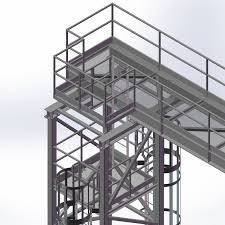The Role of BIM Clash Detection in Streamlining Construction Workflows
In the construction industry, efficiency and accuracy play a critical role in ensuring successful project execution. With multiple teams working on different aspects of a project, the risk of design clashes increases, leading to costly errors and delays. This is where BIM Clash Detection becomes a game-changer. By identifying and resolving conflicts early in the design phase, this technology helps streamline workflows, improve collaboration, and enhance overall project efficiency.
Understanding BIM Clash Detection
BIM Clash Detection is a process that identifies conflicts or inconsistencies between different building elements in a 3D digital model. These clashes can occur between architectural, structural, and MEP (Mechanical, Electrical, and Plumbing) components, which, if not detected early, can lead to on-site construction issues.
Types of Clashes in BIM
- Hard Clashes – When two building components physically occupy the same space, such as a duct running through a beam.
- Soft Clashes – When elements do not maintain the required clearance or safety distance, leading to compliance issues.
- Workflow Clashes – When scheduling conflicts arise, causing delays in construction sequencing and coordination.
How BIM Clash Detection Improves Construction Workflows
1. Early Conflict Resolution
One of the biggest advantages of BIM Clash Detection is that it helps resolve design conflicts before construction begins. This proactive approach minimizes project delays, reduces material wastage, and prevents expensive rework on-site.
2. Enhanced Collaboration Among Teams
Construction projects involve multiple stakeholders, including architects, engineers, and contractors. BIM Clash Detection fosters better collaboration by allowing all teams to work on a unified digital model, ensuring consistency and clarity in design coordination.
3. Improved Cost and Time Efficiency
Detecting and fixing clashes at an early stage helps in avoiding unexpected costs associated with on-site modifications. By eliminating conflicts in advance, project teams can stay on schedule and allocate resources more efficiently.
4. Increased Accuracy and Quality
BIM Clash Detection ensures high levels of design accuracy, leading to a smoother construction process. With detailed 3D modeling, potential risks are minimized, and the final construction outcome aligns precisely with project specifications.
5. Seamless Project Execution
By eliminating errors before the construction phase, BIM Clash Detection contributes to a more structured and organized workflow. This results in improved coordination among teams, better decision-making, and a streamlined project execution process.
Conclusion
BIM Clash Detection plays a vital role in modern construction by enhancing coordination, reducing errors, and improving overall efficiency. As the industry moves towards digital transformation, integrating this technology into construction workflows ensures better planning, cost savings, and timely project completion. By adopting BIM Clash Detection, construction companies can achieve higher productivity, minimize risks, and deliver high-quality projects with confidence.



Comments
Post a Comment